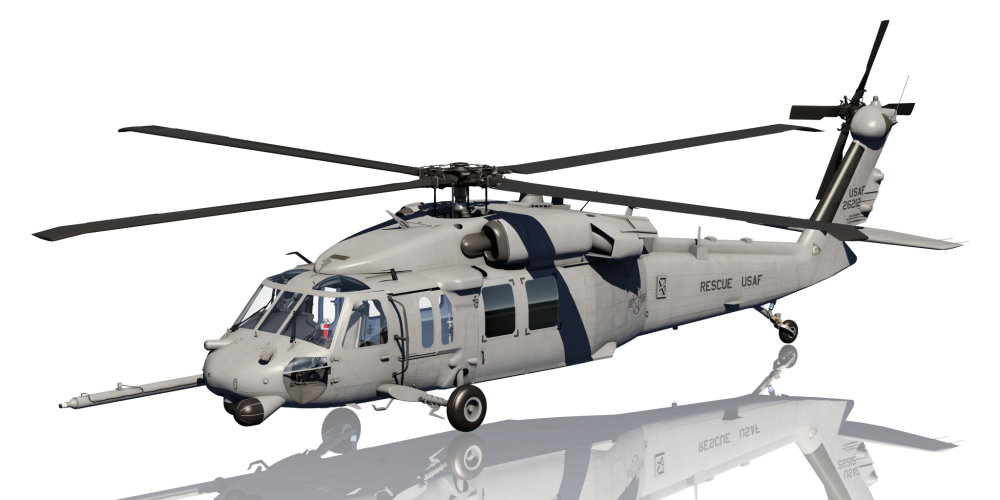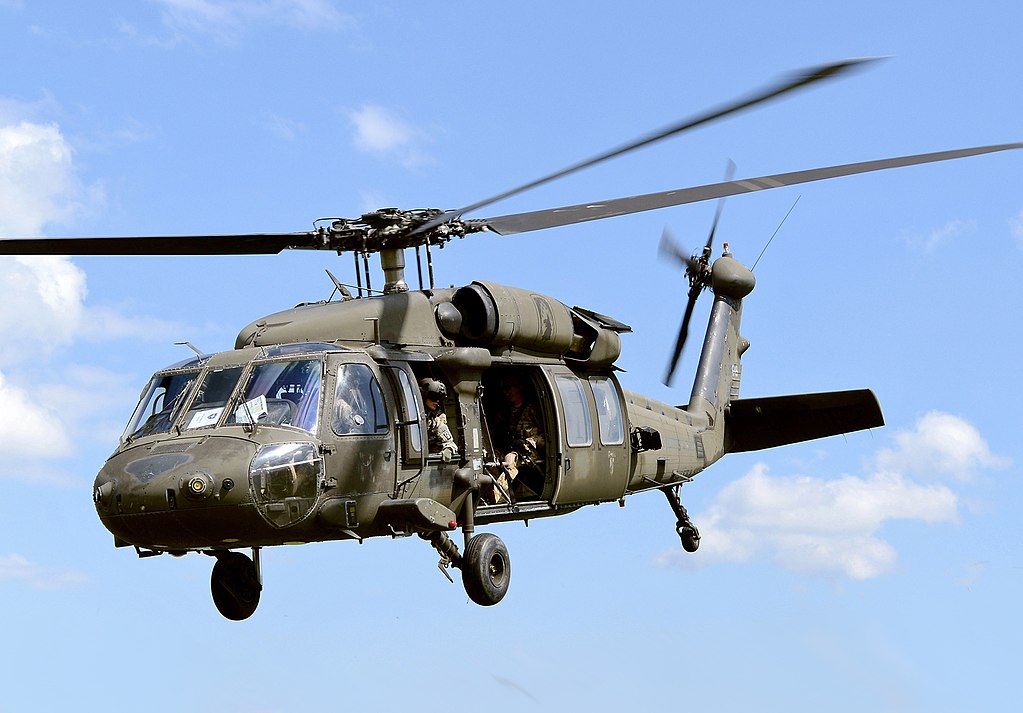UH-60: Advancements in Modern Helicopter Style
The UH-60 helicopter stands as a standard in modern-day air travel, showcasing considerable developments in style and technology that satisfy the advancing demands of military procedures. Its consolidation of sophisticated products not only enhances efficiency yet additionally addresses critical safety and security worries. The integration of sophisticated avionics has transformed functional capacities, permitting for higher situational recognition and decision-making effectiveness. As we explore the development and vital advancements of the UH-60, it becomes important to consider exactly how these advancements influence not only existing applications yet additionally the future landscape of helicopter design.

Development of the UH-60
The development of the UH-60 Black Hawk helicopter stands for a considerable turning point in aerospace engineering and military air travel. Presented in the late 1970s, the UH-60 was made by Sikorsky Airplane to satisfy the United States Military's requirement for a versatile energy helicopter capable of performing a selection of goals. Its layout emphasized speed, ability to move, and sturdiness, establishing new requirements for operational performance.
The UH-60 includes a distinctive four-blade blades system, which enhances lift and stability, allowing it to operate properly in diverse settings. Its airframe is constructed from sophisticated composite products, adding to a decrease in weight while maintaining structural honesty. The helicopter's design likewise includes better the rules of aerodynamics, which boosts gas performance and enhances variety.
Over the years, the Black Hawk has gone through numerous upgrades to boost its capabilities, including enhanced engines, progressed trip control systems, and modular systems for easy upkeep and flexibility. The helicopter's ability to carry out goals varying from army transport to medical evacuation has solidified its function as a foundation of united state army procedures. The UH-60 Black Hawk continues to be a prime example of how advancement in helicopter style can considerably impact armed forces efficiency and operational versatility.
Advanced Avionics Solutions
Improvements in avionics systems have actually changed the abilities of contemporary helicopters like the UH-60 Black Hawk, boosting functional performance and situational recognition (UH 60). The assimilation of innovative avionics enables boosted navigating, communication, and flight administration, making the UH-60 a lot more flexible in diverse mission accounts
Among the crucial functions is the advanced electronic cabin, which utilizes multifunction displays that provide real-time data, making sure pilots have instant accessibility to important trip info. This streamlining of information decreases pilot work and enhances decision-making procedures throughout complex procedures. Furthermore, the unification of GPS and inertial navigating systems makes it possible for accurate positioning and route preparation, improving goal implementation in challenging settings.
Additionally, progressed avionics systems boost communication capacities with secure information links and voice interaction systems, allowing smooth coordination with ground forces and other aircraft. The combination of automatic flight control systems further adds to enhanced stability and control, specifically in unfavorable climate condition or during low-altitude maneuvers.
Engine and Efficiency Enhancements
Engine performance in modern-day helicopters has taken a substantial leap onward, driven by advancements that boost power, effectiveness, and reliability. At the leading edge of these advancements is the fostering of even more powerful turboshaft engines, particularly those utilizing innovative materials and innovations that enable higher temperature level resistances and raised thrust abilities. The UH-60 Black Hawk, for instance, uses the T700-GE-701C engine, which includes a dual-channel, full-authority electronic engine control system. This system enhances performance while optimizing fuel usage and lowering upkeep demands.
In addition, the assimilation of engine wellness surveillance systems permits for real-time diagnostics and anticipating maintenance, substantially enhancing operational reliability. These systems not just alert teams to potential issues before they come to be critical but additionally promote extra reliable upkeep scheduling, thereby reducing downtime.

Products and Structural Innovations
Current developments in materials and structural style have actually changed modern helicopter construction, improving both performance and toughness. The intro of innovative composite products, such as carbon fiber enhanced polymers, has substantially minimized weight while preserving architectural stability. This shift not only improves fuel efficiency but likewise enhances haul ability, enabling helicopters like the UH-60 to do more diverse missions.
Additionally, innovations in light weight aluminum alloys and titanium elements have contributed to boosted resistance to rust and tiredness, expanding the life-span of important airframe elements. The critical use these materials has resulted in a decrease in upkeep requirements and boosted general operational preparedness.

In addition, the check these guys out combination of computer-aided layout (CAD) and additive manufacturing modern technologies has actually allowed extra light-weight frameworks and complex geometries, maximizing the aerodynamic performance of why not find out more helicopter layouts. These developments promote quick prototyping and manufacturing, permitting makers to respond quickly to advancing objective requirements.
Safety and Survivability Functions
Safety and survivability attributes in contemporary helicopter style have ended up being vital, showing the boosting demands for objective effectiveness in challenging environments. The UH-60 Black Hawk, a notable example, incorporates innovative modern technologies to boost team and traveler protection.
The helicopter also uses a ballistic defense system, that includes armored team seats and vital systems shielding, lowering susceptability to little arms fire and shrapnel. Improved situational awareness is achieved via innovative avionics and sensing unit innovations, allowing pilots to spot and avoid threats properly.
In addition, the combination of redundancy in essential systems-- such as double engines and several trip control networks-- guarantees ongoing operation even if one system stops working. The UH-60 is geared up with innovative emergency flotation devices, improving survivability in water landings. Jointly, these features not just improve the safety and security of personnel yet also raise objective success prices in hostile settings, demonstrating the commitment to excellence in helicopter layout.
Final Thought
The UH-60 helicopter represents a considerable improvement in modern-day aeronautics technology, incorporating ingenious materials, innovative avionics, and durable safety and security attributes. Generally, the UH-60 offers as a criteria for future advancements in helicopter design, symbolizing resilience and flexibility in contemporary click over here military operations.
The UH-60 helicopter stands as a benchmark in modern aviation, showcasing substantial innovations in design and technology that cater to the progressing needs of army procedures. As we explore the evolution and key innovations of the UH-60, it ends up being vital to consider just how these developments affect not only present applications but additionally the future landscape of helicopter layout.
Introduced in the late 1970s, the UH-60 was made by Sikorsky Airplane to satisfy the United States Army's demand for a functional utility helicopter capable of executing a selection of objectives. The UH-60 Black Hawk remains a prime instance of exactly how development in helicopter design can dramatically influence army efficiency and operational adaptability.
In general, the UH-60 serves as a criteria for future advancements in helicopter layout, symbolizing resilience and versatility in modern military procedures.
Comments on “Why the UH 60 Continues To Be a Fave Option Among Armed Forces Worldwide”